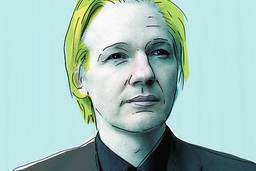A new survey conducted by the environmental watchdog group Global Witness finds that there has been a sharp increase in killings of environmental activists around the world.
According to their briefing, A Hidden Crisis?, over 711 activists have been killed in the last decade, a rate of more than one per week. In 2011, the death toll was 106 people, almost double the rate over the past three years. However, they caution that due to a lack of information and monitoring of the situation throughout much of Asia and Africa, a large number of killings could be going unnoticed.
The report was released Tuesday, the day before the Rio+20 UN Conference on Sustainable Development, the largest environmental conference in history (though somewhat ironically taking place in Brazil). The conference aims to devise new global goals from a “green economy” that could help lift billions of people out of poverty around the world without exhausting the planet’s natural resources.
Billy Kyte, a campaigner at Global Witness, said on the group’s website, “This trend [of activists murders] points to the increasingly fierce global battle for resources, and represents the sharpest of wake-up calls for delegates in Rio. Over one person a week is being murdered for defending rights to forests and land.”
Many of the killings are never punished. In Brazil, the country cited as having one of the highest numbers of activists killed, fewer than 10 percent of these cases have gone to court and only 1 percent have led to convictions.
More than 75 percent of the killings reported by Global Witness occurred in just three South American countries: Brazil, Colombia and Peru. Another 50 deaths occurred in the Philippines. In all four of these countries, indigenous groups have begun confronting industries that are trying to use their land for logging, mining and other agribusiness practices.
Last month, a Catholic bishop in the Philippines brought attention to a series of activist killings in Mindanao, the country’s second-largest island. Bishop Jose Cabantan told Philippines officials that the leader of an environmental activist group was murdered for opposing the construction of a hydroelectric dam which would have caused the displacement of thousands of indigenous people living along the Pulangi River.
As a result of these killings, many activists throughout the developing world are afraid to speak out against governmental and private sector mismanagement of the environment. This is particularly true in South American countries, where the rainforest is being destroyed at an alarming rate. According to Rainforest Action Network, more than an acre and a half of rainforest is lost every second of every day.
Global Witness hopes that by bringing attention to this issue, governments will work to protect citizens and allow them to speak out without the fear of violence.
“The international community must stop perpetuating this vicious contest for forests and land,” wrote Kyte. “It has never been more important to protect the environment and it has never been more deadly.”
Joseph Misulonas is a summer 2012 In These Times editorial intern.



